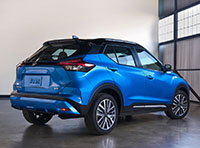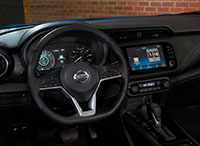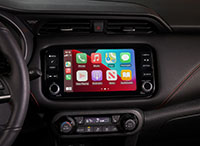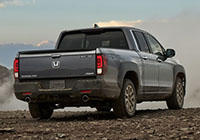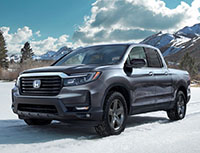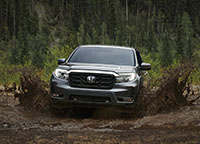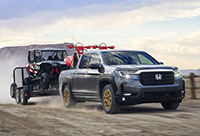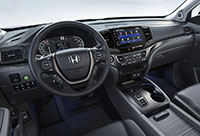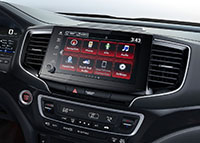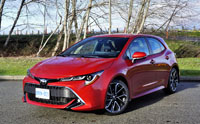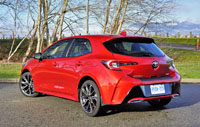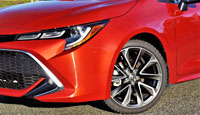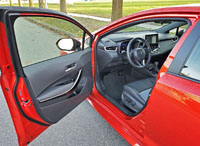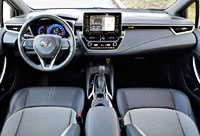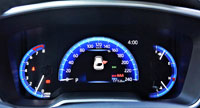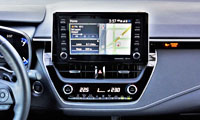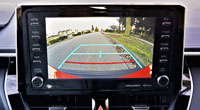
As far as alternative fuels go, hydrogen shows a lot of long-term promise, particularly when used to create electricity via a fuel cell. This allows for a virtual rolling electric power plant that charges up a battery and then drives the wheels through electric motors, just like a regular electric car.
The technology has actually been in the works for decades, with one of the first automotive applications being the Ford Focus FCV that I drove in 2005. That was when Ford was working alongside Daimler-Benz and Ballard Engineering, the latter firm specializing in hydrogen fuel cells. At the time I felt hydrogen would quickly supplant regular plug-in electric cars that hadn’t really taken off yet, because it only made sense that people wouldn’t want to live with the inconvenience and downtime of hours-long recharging. Little did I realize at the time how infrastructure challenges would put H2 technology on hold for decades, with 2021 seeing just three refueling stations spaced around my city.

It actually ended up taking another decade and a half before I could schedule a weeklong test with a hydrogen fuel cell-powered car, that innovator being Toyota’s unusual looking Mirai sedan. It’s a slightly larger than Prius-sized sedan that, similarly to my previous experience, worked exactly like a regular electric vehicle until it came time to fill it up. Back then, however, Toyota took care of refueling because the aforementioned H2 refuelling stations hadn’t been retrofitted yet (they all sell gasoline too), so I was only told about how convenient it was. More recently, with the very Hyundai Nexo on this page, I was able to pump my own H2.
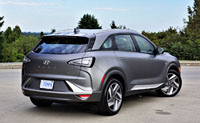
The zero-emissions Nexo took about five minutes to fill up, incidentally, and while a bit more complex than pumping gasoline into a car, a few attempts would get most anyone up to speed. As for the price, it seemed comparable to regular unleaded, although it would take more data and plenty of time to calculate whether life with a Nexo provides any financial advantages. Up to this point it hasn’t really been about pump savings anyway, but more so about the practical development of an alternative fuel that only emits water vapour yet is as easy to live with as a conventional combustion powertrain.
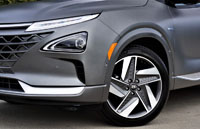
One thing I really appreciate is Hyundai stuffing all of its advanced H2 hardware into a body style and compact size most will find agreeable, not to mention styling it so as not to offend the majority of buyers. That might sound like a no-brainer, but if so, we wouldn’t have cars like the aforementioned Mirai and Honda’s equally divisive Clarity running around. The compact crossover SUV body style meant it would be immediately acceptable to consumers all over the world, while its extended wheelbase and mid-size length made certain that its battery and other electronics wouldn’t impinge on second-row passenger room and cargo volume.
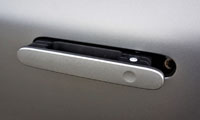
For comparison’s purposes, the Nexo is 190 mm (7.5 in) longer than the outgoing Tucson, but it’s near identical in width and height. While increasing interior spaciousness, the extra length also aids ride quality and highway stability, plus arguably looks a bit leaner.
Styling is a personal thing, so I’ll leave it up to you to decide which Hyundai SUV looks best, but I find the Nexo plenty attractive, unlike the two visually offensive competitors noted a moment ago. It features a slightly older version of Hyundai’s latest grille design, and a set of LED headlamps that seem inspired by the popular Kona subcompact SUV, while the sheet metal from front to back is ultra-smooth, especially when seen in my tester’s stylish matte grey paint scheme.

A few interesting details include a thin accent strip between the grille and hood that lights up at night, plus a set of Land Rover-inspired pop-out door handles that keep the body lines flush in order to lower drag. Lastly, the 19-inch five-spoke alloys don’t look aerodynamically wonky, like so many others in this class.

Take a seat inside and you’ll immediately appreciate that this SUV was designed to be a forerunner for Hyundai’s electronics when introduced two years ago. Ahead of the driver is a similar twin-display instrument cluster/infotainment system as Mercedes-Benz’ MBUX (which has just been completely updated in the new S- and C-Class models). A digital gauge cluster sits on the left side of a long, horizontally-positioned display, controllable with steering wheel-mounted switchgear, while a touchscreen rests to the right. Anyone who’s peeked inside a modern Mercedes will quickly see the similarities, and while I wouldn’t go so far to say Hyundai’s is better, they deserve commendation for including left- and right-side rearview cameras within the gauge cluster, which come into action by flicking the turn signal stalk. These are now commonplace features in both Hyundai and Kia vehicles, setting them apart from most rivals.
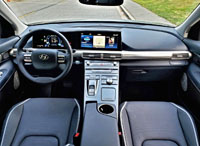
While the gauge cluster and infotainment display is about as advanced as this sector gets, the sloping centre stack comes across a bit more antiquated thanks to being filled with switchgear, including P, N, D and R buttons that engage the SUV’s 120-kW (161 hp) electric motor. That thrust is complemented by 291 lb-ft of twist, all of which gets pulled from a 40-kWh battery. While it looks like an SUV, only FWD is available, although Hyundai would probably find a way to add AWD if the Nexo were to go mainstream.
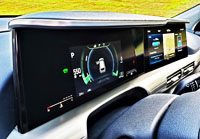
The 95-kW fuel-cell stack provides electricity production on route, as noted earlier, so therefore recharging is continuous, as long as there’s enough hydrogen in the tank. Depending on conditions, the EPA claims the Nexo is good for approximately 570 to 610 km (355 to 380 miles) when topped up.
As noted earlier, the Nexo drives like an electric vehicle, although the normal silence was interrupted by a subtle vacuum-sucking sound when pushing hard on the throttle. I only went for the gusto while testing, mind you, so for most commuting I found it nice and quiet.

Nevertheless, when a fast getaway was needed the Nexo provided plenty of get-up-and-go, taking off from a standstill as enthusiastically as dispatching slower moving highway traffic. What’s more, it went about its business in a wholly refined fashion, never interrupting the bliss with any jarring responses. Ever so smoothly it whisked from zero to 100 km/h around 8.5 seconds (I used my Seiko chronograph to time it, so don’t hold me to the exact number), which is a half-second faster than Hyundai managed, but the difference may have more to do with my less than scientific method, combined with their usual conservativism. While this won’t likely impress too many Tesla owners (or for that matter Chevy Bolt owners), but it had no problem staying ahead of most surrounding traffic.

Handling was the Nexo’s more pleasant surprise. I veered off a local freeway onto a serpentine backcountry road that winds along a river near my home, at which point it was evident that Hyundai’s engineers took advantage of the SUV’s low centre of gravity. This is due to battery being housed below the floorboards, and thus it really hung on through fast-paced curves, while its electrically-assisted rack and pinion steering system was quite responsive for its compact crossover class.

I found the Nexo’s ride quality even better, with much credit going to its conventional front Macpherson strut and rear multi-link suspension layout, plus nicely sorted tuning. This meant that potholes, frost-heaves, bridge expansion joints and other road intrusions hardly impacted those within, which all resulted in one of the better ride/handling compromises in this segment; especially notable when factoring in its large 245/45HR19 all-season rubber.
The Nexo feels well-made and rock solid too, with absolutely no body creaks despite benefiting from a large glass sunroof above, while wind or road noise was kept to a minimum too. Again, I was pleasantly surprised by this compact SUV’s refinement.
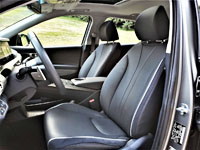
I’m guessing that the focus on refinement is why Hyundai didn’t include a sport mode. Alternatively, selecting Normal is the default performance mode, while Eco makes everything even smoother and more fuel-efficient.
On this note, the two paddles on the steering wheel aren’t for shifting gears, but rather the one on the left is for applying the brakes and sending regenerative kinetic braking energy to the battery simultaneously. The Nexo comes to a full stop when continuing to pull this paddle back, as long as you’re not moving too quickly before application. Also, the strongest of the system’s three settings needs to be chosen first, but that’s the job of the right-side paddle, along with cancelling any rolling resistance by easing the regenerative brakes off. Most electric cars use such systems, so anyone that’s driven a popular EV will quickly acclimatize to this hydrogen-powered SUV.
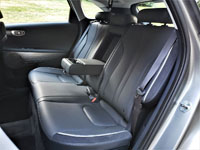
Like those just-noted EVs, the Nexo is filled up with features to help offset its higher price point. Together with the superb digital gauge cluster and infotainment touchscreen mentioned earlier, my Nexo tester came with a surround-view overhead parking camera, an accurate navigation system with nicely detailed maps, Apple CarPlay and Android Auto smartphone integration, a wireless charging pad, plus more.
As for luxury, we shouldn’t expect too much now that Hyundai Motor also has its Genesis premium brand, but the mainstream brand did cover the dash top in a nicely textured soft-touch composite, just like the front and rear door uppers, plus the door inserts and armrests.
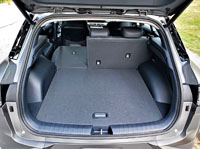
I like that it included a heatable steering wheel, while its powered driver’s seat was comfortable and provided three-way heatable and cooled cushions. The powered lumbar support was only two-way, but fortunately it found the right spot on my lower back to relieve my traffic stress.
The longer wheelbase I mentioned before makes a big difference when it comes to legroom, while the Nexo’s width is reasonable for the compact SUV segment. Three could probably sit across the rear bench if needed, but two would be more comfortable, and that would mean inside elbows would benefit from its folding centre armrest with two integrated cupholders, as well as the outboard seat warmers. There’s a three-prong household-style power outlet on the backside of the front console too.
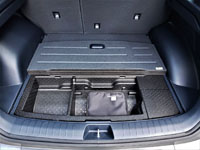
As for cargo, the dedicated space behind those rear seats is good for up to 850 litres (30 cu ft) of gear, plus it can be expanded to 1,600 litres (56.5 cu ft) when those 60/40-split rear seatbacks are folded down. I would have preferred a 40/20/40 split rear seat, for stowing longer items such as skis down the centre, but such conveniences are rare in this class. I appreciated its mostly level load floor as it was, not to mention the slim storage compartment below the carpeting.
So, what’s it all cost? This is where I recommend you get yourself a stiff coffee, or possibly something stronger, because Nexo’s entry price might induce sticker shock. How does $71,000 (plus freight and fees) sound to you? Yah, there’s a price for being an early adaptor, which is made steeper when factoring in that you’re not really saving anything at the pump. At least a $52,000 Tesla Model Y will let you say goodbye to gasoline forever, or for that matter Hyundai’s own Ioniq Electric, which will only set you back $41,599.
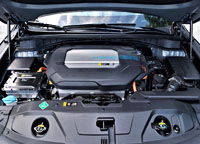
My Ultimate-trimmed tester was actually a bit pricier at $73,500, which I learned by checking the 2021 Hyundai NEXO Canada Prices page right here on CarCostCanada. While you’re looking, be sure to check out the other models mentioned in this review by following the links connected to their names.
Also, find out about how a CarCostCanada membership can leave more money in your wallet when buying a new vehicle. A membership will help keep you up to date on factory rebates, manufacturer leasing and financing deals, and most importantly provides you dealer invoice pricing that can save you thousands when negotiating your best deal. Remember to download the free CarCostCanada app from the Google Play Store or Apple Store too, so you’ll always have this vital info on hand.
Story and photos by Trevor Hofmann


